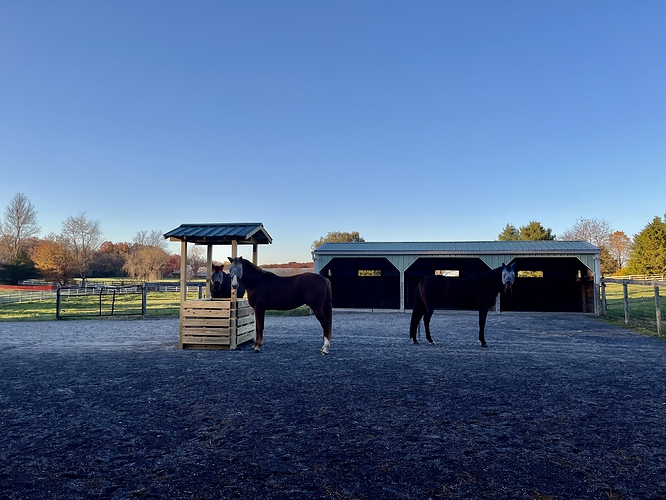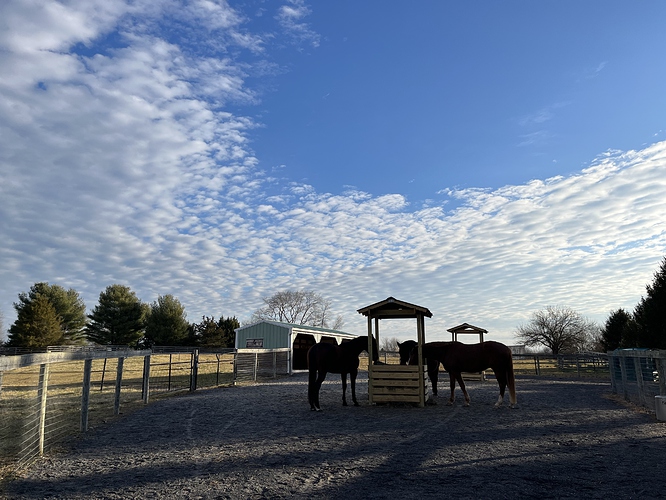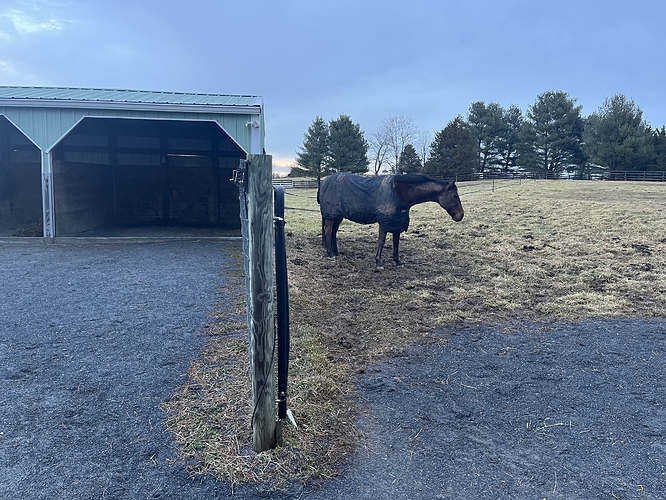I purchased a 10-acre boarding facility in Western Pennsylvania (AKA the cloudiest, dreariest, dampest place on earth for 6 months out of the year) in June. The previous owners slacked on upkeep for the past few years so we had a lot of scrambling and 911 catching up to do. One of the things that we didn’t really get to before the winter season was mud management and I am absolutely kicking myself for it now.
We have 4 horses out on a “sacrifice” area that is almost an acre and it’s our biggest mud problem. They have - of course - almost immediately churned up any hint of grass and turned the entire area into a sloppy, muddy mess that’s at least fetlock deep. I think that at this point the “mud” is mostly poop. We just didn’t have the setup to pick the paddock leading up to this. Western PA has a notoriously thick clay base and I think between the poop and the clay, water just simply is not draining out of this paddock. I suspect that this “soil” has likely morphed into something else completely that more closely resembles pure crap.
The previous owners also used this area as a sacrifice pasture, however; they kept their horses in for 20 hours a day between the months of November to March, and now I’m beginning to understand why.
We did manage to create dry areas in this paddock with some Lighthoof panels and that’s where the hay feeders are. Thankfully, they now spend most of their time on these dry areas but when they have to slop their way to and from their stalls/water trough, I just cringe.
Is there anything we can do now to try to help the water drain/dry up some mud (lime?), or something we can start doing to prepare to revive this poor paddock once we get some hopefully dry weather in late spring? I already took a “soil” (LOL) sample to send off to our AgExt office. They’re probably going to wonder why I just sent them a fecal sample.
I feel so defeated.



 I do love my dry lot. Including the fence/gates, Nelson waterer, and shed with electric it cost as much as my arena, but they’re my two favorite (inanimate) things so it’s all worth it. Here are a couple recent pics:
I do love my dry lot. Including the fence/gates, Nelson waterer, and shed with electric it cost as much as my arena, but they’re my two favorite (inanimate) things so it’s all worth it. Here are a couple recent pics:


 That is certainly more affordable!
That is certainly more affordable!
